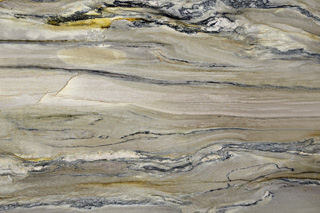
The
appeal of natural stone, such as marble, for
use in renovation projects and home building, has been in high demand for
decades. It can be shaped and utilized for many purposes, including sculptures
and countertops, but the steps required to get the stone where it is needed is
quite a bit different from many other mined materials. Marble is mined as a
dimension stone. Dimension stone is different from minerals or precious metals,
like platinum, in that they are generally taken from the ground in large blocks
or slabs, rather than small pieces like those seen in a gold mine. The first
step in the process is locating marble deposits.
Prospecting
Marble is discovered the same way most other
stones or minerals are found. Geologists and other rock experts use similar
methods to those used in gold mining to discover where the marble exist in the
earth. Areas deemed likely to have a high content of the substance in question
by the surveying team will be drilled, and samples from as deep as 1,200m will
be examined to ensure a quarry with high yields. According to the most recent
reports from the Ministry of Industry in the Republic of Tunisian, a producer
of high quality marble themselves, five countries combined currently represent
57% of the world's marble exports: Italy (20%), China (16%), India (10%), Spain
(6%), and Portugal (5%).
Mining
and Transporting
Once the stone has been discovered, it is
removed from the earth in very large blocks using drills and saws. Ideally, the
blocks are removed in the shape of a rectangle because it is easier to
transport and shape. Before it is transported to a plant to be processed, the
large blocks are examined. Impurities, blemishes, and cracks are removed from
the stone. Next, the stone blocks are organized by colour. The blocks will then
be moved to the processing plant where they will be shaped or formed into
smaller blocks and
slabs.
Processing
Once the marble blocks arrive at the
processing plant, they are measured and cut into several smaller pieces that
are more manageable. Cutting the blocks can be a dangerous and unstable duty
because no two blocks are of the same composition. Different materials going
into the saw have different densities that will alter the required speed and
torque of the equipment being used. Some saw blades used for cutting marble
blocks could have a 5.4m diameter. Once useable sized slabs are cut, they are
run through a polishing process. There are different processes for different
types of finishes, from honed to glass polished, but all use a similar
technique which involves grinding the surface with a decreasingly course
abrasive material until the desired look is achieved.
Knowing how your marble is cut and where
your marble comes from is an important step when
shopping and comparing prices. It also allows
one to better appreciate the beauty of their investment in natural stone by
creating a history of the piece which can be solidified through tactile
response. Enjoy your stone pieces. They came a long way to be with you, and
they'll last a lifetime.